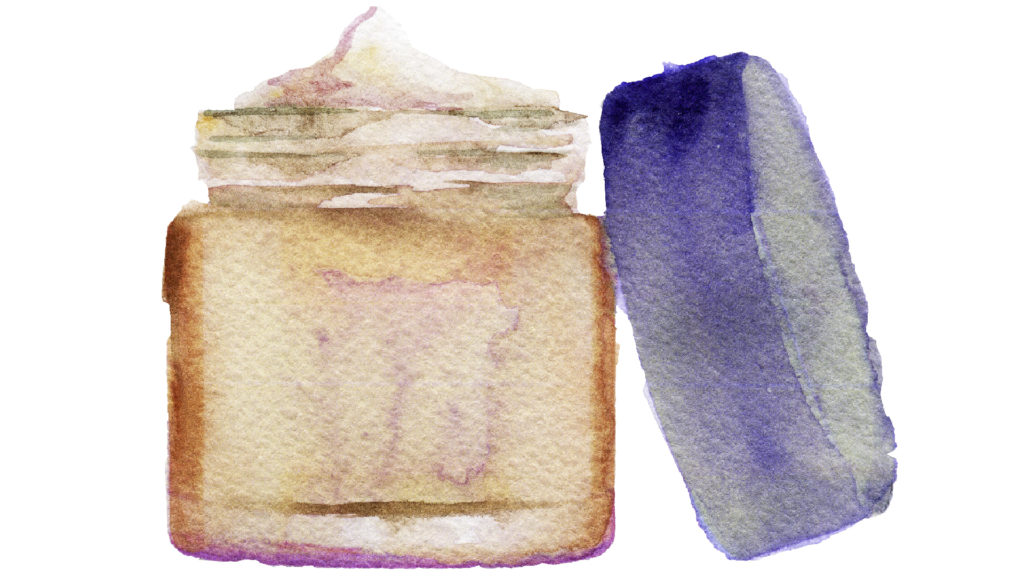
What’s all the hype about natural skin care? Why not just find the cheapest product and go with it?
All around the world, for thousands of years, women have turned to natural, preservative-free, plant-based oils for skin vitality and wellness. As well, science backs up the highly effective benefits of natural skin care. I was thrilled to read in a recent study (American Journal Clinical Dermatology) that some natural plant-based, cold-pressed oils possess “antioxidant, antimicrobial, and skin-barrier repair properties.” Wow! (*Study details at end of post).
To help us understand the wonderful benefit of natural oils, we’ll look at two factors:
- Extraction method
- Healing acids
Extraction method
What makes an oil or butter “natural”? The method of processing – steam, cold-press, or chemical/heat.
Steam Processing
Steam processing is the method used to distill essential oil. This process maintains the volatile compounds – terpenes and terpenoids – which give us beautiful and intense scents. At our Akronside garden we distill our own essential oils, so we’re all about it. But as fabulous as essential oils are, skin repair isn’t their main game.
Cold Press Processing
This is the process that keeps the fatty acids and glycerides so helpful for skin care. Cold pressing is just what it sounds like – pressing so hard that waxy oil is extracted from the kernels and seeds and nuts. For an oil to be “extra virgin” it is derived through cold pressing, with no further refining. The compounds we look for to use in our skin care products are cold-pressed and non-refined.
Chemical and Heat Processing
Non-virgin oils are processed through heat and chemicals, which break down the fatty acids and nutrients that can help repair the skin. Also, when synthetic fragrances are added to oils, that’s another potential skin irritant. These processes are practical and affordable for commercial manufacturing. We steer clear, avoiding inevitable irritating byproducts.
healing acids
Linoleic vs Oleic
What makes a natural (cold-pressed) oil beneficial? For one thing, higher ration of linoleic acid to oliec acid. More oleic acid correlates with higher acidity which may irritate and deter skin-barrier function. More linoleic acid helps decrease water loss, increase hydration, regulate PH and sebum levels.
A great skin moisturizer repairs skin by providing hydration via glycerol and by preventing transepidermal water loss. Due to the research for this post, we’ve stopped using olive oil or almond oil in our skin care products. Both are high in oleic acid, and do not stop transepidermal water loss. And, though we had stopped using coconut oil much, now we’re definitely confident in using it. You’ll see why.
Sometimes oleic acid is helpful, such as in reducing oily skin. In some of the oils listed below, you’ll notice the oleic acid ratio is high, but the oil is still beneficial. This is due to the unique composition of fatty acids and glycerides in that oil. All in all, science seems to back up those with higher linoleic acid as better for reparative uses such as an anti-aging or anti-wrinkle cream.
butters and oils for our skin care products
ARGAN OIL (Argania spinosa)
Only slightly higher in oleic acid. Improved skin elasticity in postmenopausal women. Can reduce oily skin. Legendary as a Morrocan beauty treatment.
CAMELLIA SEED OIL (Camellia oleifera)
With high linoleic acid, as well as plant collagen and Vitamin A and E, camellia seed oil is a natural choice for anti-wrinkle cream. Origin: Japan.
COCONUT OIL (Cocos mucifera)
Low in both linoleic and oleic acids, coconut oil contains monolaurin, an antimicrobial. Studies reveal it aids skin hydration and can help reduce staphylococcus infection (after four weeks of use).
GRAPESEED OIL (Vitis vinifera)
Compared with 14 other oils, grapeseed is highest in linoleioc acid. Four times more than oleic acid. This makes it a protectant. Origin: Mediterranean, Iran, Portugal
JOJOBA OIL (Simmondsia chinesis)
Jojoba is closest in composition to natural human sebum (50% wax). It’s waxy composition makes it excellent in penetration. And, because of its fatty esters, jojoba oil resists degradation.
MANGO BUTTER (Mangifera indica L.)
Mango butter originates in India or Burma. The qualities of mango butter are similar to shea butter, with high oleic acid. Mango feels a bit less heavy or greasy, making it a wonderful addition to the rich Wondrous Anti-Wrinkle Compound.
OAT OIL (Avena sativa)
Carries anti-inflammatory and anti-itch properties. Slightly higher in linoleic acid than oleic acid. Very effective in improving skin hydration.
SHEA BUTTER (Butyrospermum parkii)
Origin: Netherlands. Shea butter is nearly ten times higher in oleic acid. Much debate has surrounded its popularity, but I love the way shea butter treats skin. It bears helpful compounds in other categories than fatty acids, and a 2018 study published in the International Journal of Molecular Sciences*** showed shea butter to be an anti-inflammatory with perhaps anti-oxidant properties as well.
SUNFLOWER OIL (Helianthus annus)
Origin: Southwest US, Mexico. More than double the linoleic acid than oleic acid. Significantly improves skin hydration.
UCUUBA BUTTER (Virola surinamensis)
The Ucuuba (Ucuhuba) seed is high in fatty acids other than linoleic and oleic, such as microbial laurin, and high in Vitamin E. It absorbs easily and is the rich base in Wondrous, our anti-aging cream. Although I struggled to find scientific research (other than research on its essential oil as an anti-malarial treatment), in Amazonian regions, where Ucuuba Butter originates, it is known for its reparative anti-septic and anti-inflammatory properties.
click on the following skin care products:
*Scroll to the side for info re: "Natural Oils for Skin-Barrier Repair: Ancient Compounds Now Backed By Modern Science" by Vaughn, Clarek, Sivamani, and Shi, published in American Journal Clinical Dermatology (2018) 19:103-117 https://doi.org/10/1007/s40257-017-0301-1.
**Scroll to the side re info on camellia seed oil: https://www.researchgate.net/publication/6420576_Effect_of_Camellia_japonica_oil_on_human_type_I_procollagen_production_and_skin_barrier_function
***Scroll to the side re info on shea butter: https://www.ncbi.nlm.nih.gov/pmc/articles/PMC5796020/
Leave a Reply